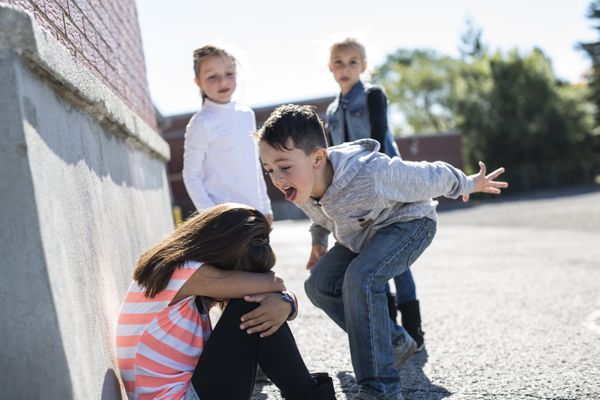3.2.1
Internal Processes
Internal Processes
Internal Processes
Educational achievement (how pupils do in school) can be affected by internal and external factors. Internal factors are things found within the school environment that might affect pupils’ attainment.


School ethos
School ethos
- This refers to the atmosphere of the school.
- A school might focus on academic attainment, morals and policies dealing with bullying or racism, or any other type of discrimination.


Setting
Setting
- Setting is putting pupils into groups based on their ability in particular subjects.
- This is seen as positive as it challenges the most able and lets the least able to work at their own pace
- However, this method can lead to labelling.


Streaming
Streaming
- Streaming is putting pupils into groups based on their ability on general assessments.
- It’s easier to have pupils divided based on their performance, but it can lead to low self-esteem.


Mixed ability
Mixed ability
- Mixed ability is when pupils are put into groups invariably of their achievement.
- This can push some pupils to try harder but at the same time can drag brighter pupils down as the teacher might adapt their lesson according to the least academically capable.
Internal Processes
Internal Processes
Educational achievement (how pupils do in school) can be affected by internal and external factors. Internal factors are things found within the school environment that might affect pupils’ attainment.


Labelling and self-fulfilling prophecy
Labelling and self-fulfilling prophecy
- Pupils tend to be labelled based on their academic abilities.
- For example, once a student is labelled as ‘not very bright’ everyone responds to this label and perceives them as ‘not very bright’.
- The labelled pupil then starts to live up to this label and behaves in this way. This is called the self-fulfilling prophecy.


Becker (unconscious labelling)
Becker (unconscious labelling)
- According to Becker, labelling takes place into schools.
- In other words, teachers tend to make judgements based on pupils' appearance and behaviour.
- Usually, middle-class pupils tend to be perceived as successful and this is why they are put in the higher streams and sets.


Pupil subcultures
Pupil subcultures
- These are groups of pupils who share the same norms and values.
- They tend to have the support of their peers and that gives them a sense of fulfilment.
- They can be separated into pro- and anti-school subcultures depending on whether they agree or disagree with the dominant norms and values.


Working-class subculture
Working-class subculture
- The working-class parents that don’t value education tend to pass on their children the same mentality.
- So when the latter go to school they form anti-school subcultures, i.e. groups who go against the norms and values of the school as Willis suggested in his study ‘Learning to Labour’.
Ball (1981)
Ball (1981)
A key study is by Ball (1981) who conducted a case study of secondary schooling at Beachside Comprehensive.


Ball
Ball
- Ball researched schooling in a south coast comprehensive school.
- It was based on three years' fieldwork as a participant observer.
- This is a participant observation study in the tradition of Colin Lacey’s Hightown Grammar and David Hargreaves Social Relations in a Secondary School.


Investigation
Investigation
- Ball tried to evaluate the difference between pupils who were put into streams and sets and those who were taught in mixed ability classes.


Findings
Findings
- Ball concluded that pupils were conformists; they lived up to the expectations that the pupils/school had set for them.
- Even though in their first days they were doing quite well, as time passed by their behaviour gradually changed.
1The Sociological Approach
1.1Introduction to Sociology
1.2Sociological Approaches
1.3The Consensus vs. Conflict Debate
2Families
2.1Functions of Families
2.2Family Forms
2.3Conjugal Role Relationships
2.4Changing Relationships Within Families
2.5Criticisms of Families
3Education
3.1Roles & Functions of Education
3.2Processes Within Schools
4Crime & Deviance
4.1The Social Construction of Crime
4.2Social Control
4.3Criminal & Deviant Behaviour
5Social Stratification
5.1Social Stratification
5.2Poverty as a Social Issue
6Sociological Research Methods
6.1Research Methods
6.1.1Research Design
6.1.2The Scientific Method
6.1.3Other Considerations
6.1.4Primary Sources
6.1.5Secondary Sources
6.1.6Surveys
6.1.7Sampling
6.1.8Questionnaires
6.1.9Interviews
6.1.10Observation
6.1.11Statistics
6.1.12Case Studies
6.1.13Longitudinal Studies
6.1.14Ethnography
6.1.15Experiments
6.1.16Small Scale Research
6.1.17End of Topic Test - Research Methods
Jump to other topics
1The Sociological Approach
1.1Introduction to Sociology
1.2Sociological Approaches
1.3The Consensus vs. Conflict Debate
2Families
2.1Functions of Families
2.2Family Forms
2.3Conjugal Role Relationships
2.4Changing Relationships Within Families
2.5Criticisms of Families
3Education
3.1Roles & Functions of Education
3.2Processes Within Schools
4Crime & Deviance
4.1The Social Construction of Crime
4.2Social Control
4.3Criminal & Deviant Behaviour
5Social Stratification
5.1Social Stratification
5.2Poverty as a Social Issue
6Sociological Research Methods
6.1Research Methods
6.1.1Research Design
6.1.2The Scientific Method
6.1.3Other Considerations
6.1.4Primary Sources
6.1.5Secondary Sources
6.1.6Surveys
6.1.7Sampling
6.1.8Questionnaires
6.1.9Interviews
6.1.10Observation
6.1.11Statistics
6.1.12Case Studies
6.1.13Longitudinal Studies
6.1.14Ethnography
6.1.15Experiments
6.1.16Small Scale Research
6.1.17End of Topic Test - Research Methods
Unlock your full potential with Seneca Premium
Unlimited access to 10,000+ open-ended exam questions
Mini-mock exams based on your study history
Unlock 800+ premium courses & e-books
